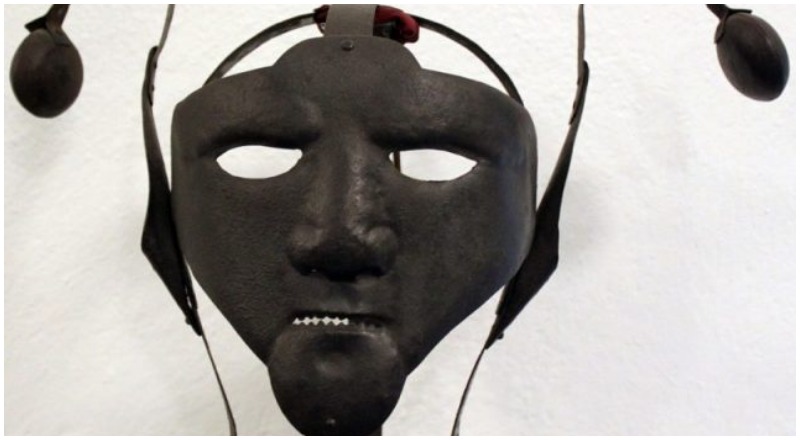Encased in an iron mask held tight at the back with a padlock, the scold’s bridle, or brank, is a gruesome, commonplace exhibit in the world’s museums, castles and torture-themed tourist traps.
Its victims — mainly in Scotland (where it originated) and Northern England — were almost exclusively women, condemned as “scolds” or “shrews” by local magistrates.
But being a “scold” didn’t just mean nagging or berating. Many of the women entombed in the scold’s bridle were wives who had the guts to snap at their husbands in an era where a man’s word went unquestioned.
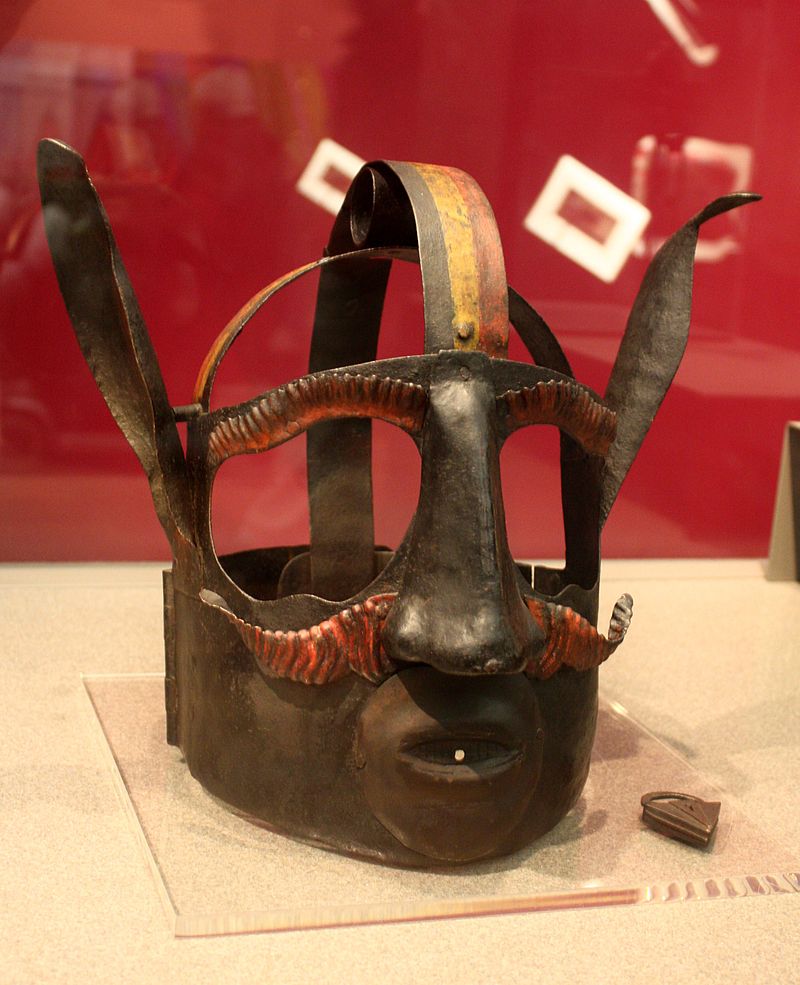
In the 16th and 17th centuries a scold was a woman whose behaviour was considered anti-social. Whether charged with abusing authority, hitting someone, or sexual misconduct, scolds were judged to have disrupted the harmonious life of the community.
As an English legal summary from 1675 explains: “A scold in a legal sense is a troublesome and angry woman, who by her brawling and wrangling amongst her neighbours, doth break the public peace, and … increase public discord.”
One of the only first-hand accounts of the scold’s bridle in use gives an idea of who its victims were. Dorothy Waugh was a Quaker, a heavily persecuted Christian sect, who was hauled before the magistrate for both publicly preaching her “blasphemous faith” and speaking out against the mayor of Carlisle, an English town just south of the Scottish border.

Waugh was hauled before the mayor and testified in 1656 that “he was so violent and full of passion he scarce asked me any more questions, but called out to one of his followers to bring the bridle as he called it to be put upon me, and was to be on three hours [It] was a stone weight of iron […] and three bars of iron to come over my face, and a piece of it was put in my mouth, which was so unreasonably big a thing for that place as cannot be well related, which was locked to my head, and so I stood their time with my hands bound behind me with the stone weight of iron upon my head and the bit in my mouth to keep me from speaking and the Mayor said he would make me an example.”
Gender-specific punishments became the norm in England in the 15th century, with the most infamous fate faced by women being the ducking stool, or cucking stool — often incorrectly associated with suspected witches.
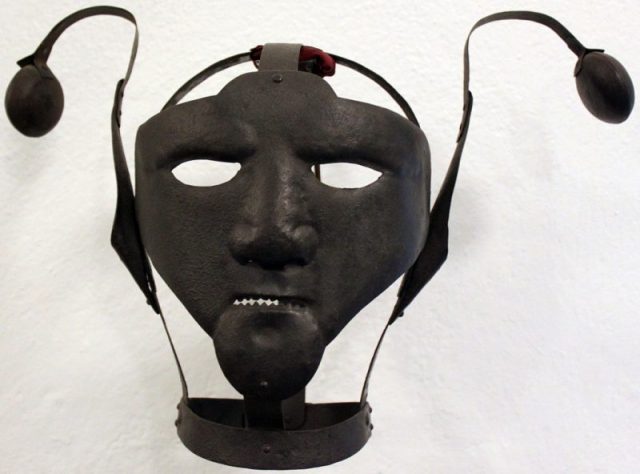
While men were sentenced to physical abuse in the pillory or stocks as punishment for their petty offences, a woman convicted of disturbing the peace would be strapped into a chair mounted on the back of a dung cart.
She was then paraded around the town to draw an audience on her way to the ducking, and there she would be dunked repeatedly beneath the surface of a pond or river to the delighted cheers of the onlookers.
Sometimes a special lever-like contraption was used instead of the cart to lift the poor woman in and out of the freezing water — this is probably what you’re most familiar with from popular culture.
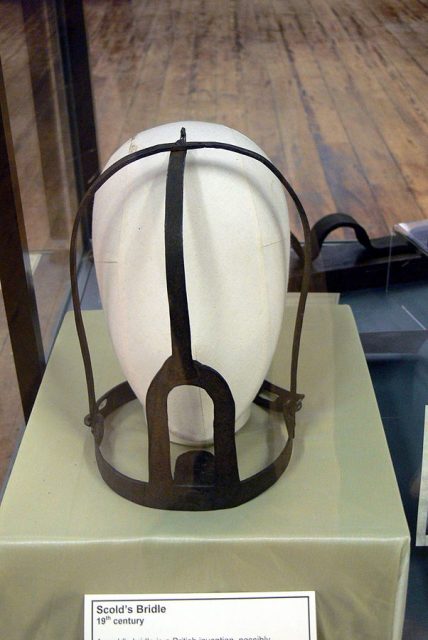
Likewise, with the scold’s bridle it wasn’t enough that troublesome women be silenced by the spiked metal bit that was inserted into their mouth — holding their tongue flat in case the wicked spines drew blood — they had to be humiliated too.
Compared to the stocks there was clearly an extreme level of humiliation designed to punish not just the crime, but the fact that a woman had stepped out of line to commit it.
Like the bridle on a horse, it was a dehumanising and degrading sign that the offending woman was little better than an animal to be tamed.
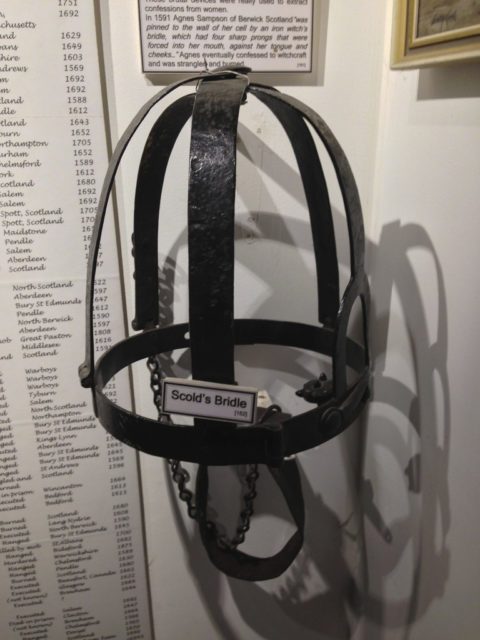
The masks were fashioned to draw attention and jeers from the crowds, with some surviving examples having horns or antlers, or styled into grotesque faces.
Sometimes musicians would be involved, following the victim around and making comic noises like the sound of breaking wind.
Those sentenced to the scold’s bridle may have been led through the town on a chain by one of the magistrates officials. Some were even chained to the whipping post, market cross, or other prominent central feature in the town, and left to suffer until they were deemed to have been humiliated enough.
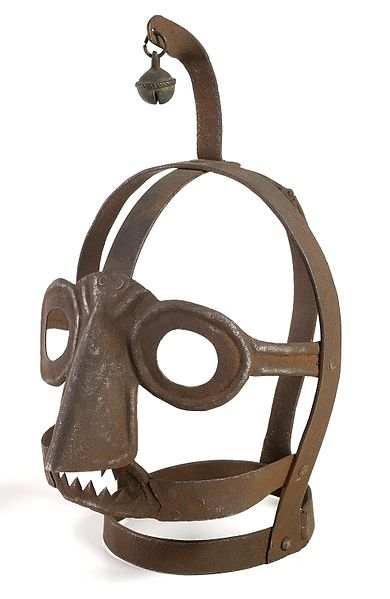
Unlike the ducking school which was in common use across England, the scold’s bridle was illegal as it was regarded as a form of torture, not punishment.
Though it soon spread to Northern Europe — in particular Belgium and Germany — in its country of origin it is curiously absent from court records, either because magistrates didn’t want to leave a trail of evidence… or because it was hardly used at all.
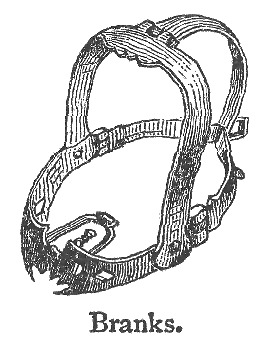
As a result, it’s difficult to know how widespread the use of the scold’s bridle was, and for what crimes precisely — and some historians are sceptical of its use altogether.
They note that many of the exhibits in museums are exaggerated 19th century copies of a smaller number of existing exhibits or even total fantasies, commissioned by men with overactive imaginations to show off to dinner guests.
What we do know for certain, however, is how little society thought of women who stirred up trouble and turned their neighbours against them, and how important it was believed to be that they be ridiculed and put in their place.
